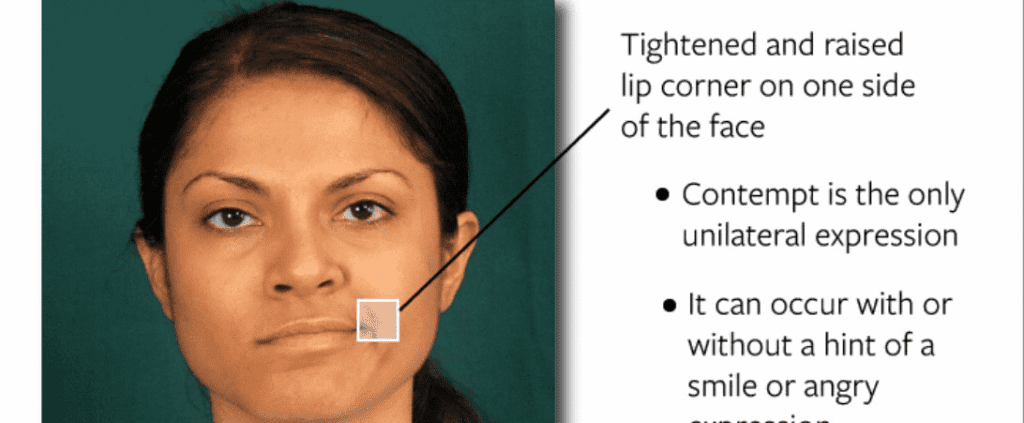Overcoming Contempt
The PMA Science Guide to Overcoming Contempt
Contempt is a powerful emotion that can stem from various sources—sweetheart women and men, the workplace, business environments, the street, different ethnic backgrounds, and even family members. Dealing with contempt effectively is crucial for personal and professional success. This blog explores overcoming contempt using principles from Stoicism, Positive Mental Attitude (PMA), psychology, esoteric thinking, economics, and Paul Ekman’s emotional insights. We will guide you with examples, methods, metaphors, and real-life cases.

What Does Contempt Look Like?
Contempt is one of the seven basic emotions identified by Paul Ekman, and it has a distinct facial expression:
• One side of the mouth raised: The most recognizable feature of contempt is the asymmetrical facial expression, where one corner of the mouth is pulled upwards, often forming a smirk. This micro-expression can look like a half-smile, but it lacks the warmth or sincerity of a genuine smile.
• Subtle sneer: The raised corner of the mouth can give the appearance of a sneer, signaling a feeling of superiority or disdain.
• Eyes: The eyes may be slightly narrow, often without the direct, warm engagement typical of other positive emotions like happiness.
Recognizing Contempt in Others
• Asymmetry: Unlike other emotions that engage both sides of the face evenly (like a complete smile), contempt is typically asymmetrical, involving only one side of the face.
• Brief Expression: Contempt might flash briefly across a person’s face before they return to a neutral or different expression. Ekman referred to these quick expressions as “micro-expressions.”
Practical Example
Imagine you’re in a meeting, dating, or just saying hi, and you make a suggestion. A colleague, lover, spouse, manager, or politician responds by narrowing their eyes and slightly raising one corner of their mouth. This micro expression could signify contempt, indicating that they deem your suggestion inferior or unworthy of attention. Additionally, you are viewed in their eyes as unworthy and inferior.
What is Contempt?
Contempt is a complex emotion and micro-expression involving disdain, superiority, or disrespect towards someone or something. It often arises when a person feels that another person, idea, or behavior is beneath them or unworthy of consideration.
Critical Aspects of Contempt:
1. Emotional Disdain: Contempt is the expression of disgust or rejection of a subject or person. Contempt messages or looks can be directed at an individual or several individuals or groups across multiple cultures or even at abstract ideas.
2. Superiority: A person experiencing contempt acts and feels superior to the target of their contempt, viewing them as inferior or unworthy.
3. Nonverbal Expression: Contempt expressions are usually nonverbal, such as a smirk, a sneer, or a roll of the eyes. In the study of contempt, Paul Ekman identified the asymmetrical smirk as a critical facial expression.
4. Interpersonal Impact: Contempt can be particularly damaging in relationships. It conveys a lack of respect and can erode trust and communication, often leading to conflict and estrangement.
5. Psychological Context: In psychology, contempt is considered a primary emotion universally recognized across cultures. It’s distinct from anger or disgust, although it can be related to them.
Example of Contempt:
Imagine someone suggesting a meeting, and another person responds with a smirk as if to say, “That’s a ridiculous idea.” This reaction displays contempt, indicating that the person feels the suggestion is not worthy of serious consideration.
Contempt in Relationships:
Contempt is particularly toxic in close relationships, such as between romantic partners or family members. According to relationship expert John Gottman, contempt is one of the strongest predictors of relationship breakdowns because it communicates a lack of respect and empathy.
Contempt in Relationships:
Contempt is more than a fleeting emotion; it reflects deep-seated judgments and can have significant implications for personal and professional relationships. Understanding and addressing contempt, whether one experiences it or is the target, is crucial for maintaining healthy, respectful interactions.
Now, let’s see what tools can help us overcome contempt.
1. Stoicism: Strength Despite Contempt
Method: Control What You Can; Accept What You Cannot
Stoicism teaches us that while we cannot control others’ actions or feelings, we can control our reactions. We must maintain our composure and integrity if we face contempt from a sweetheart, family member, or colleague.
– Example: In the workplace, if your efforts are met with contempt, focus on doing your job well and acting professionally. Over time, this consistent behavior can shift how others perceive you.
– Metaphor: “You are the captain of your ship; the storm is beyond your control, but how you steer it is up to you.”
– Case: Marcus Aurelius faced contempt from the Roman Senate but remained steadfast in his duties, eventually earning their respect. Meditation’s book teaches this.
2. Positive Mental Attitude (PMA): Turning Adversity into Opportunity
Method: Focus on Solutions, Not Problems
PMA encourages us to maintain an optimistic outlook even in the face of negativity. When faced with contempt from a romantic partner or a business associate, channel your energy into finding constructive solutions.
– Example: If your sweetheart shows contempt, seek to understand their perspective instead of reacting negatively and work towards improving the relationship.
– Metaphor: “A positive mindset is like a sun that melts away the frost of contempt.”
– Case: Oprah Winfrey overcame contempt from her family and environment by focusing on her dreams, ultimately achieving incredible success.
3. Psychology: Understanding and Reframing Contempt
Method: Reframe the Situation Using Cognitive-Behavioral Techniques
Psychology teaches us that contempt often reflects the insecurities or biases of others rather than an accurate assessment of our worth. Reframing contempt as a reflection of the other person’s issues can help you respond more effectively.
– Example: If a colleague or family member shows contempt, recognize that their behavior might stem from their struggles. Approach the situation with empathy and assertiveness.
– Metaphor: “Contempt is often a mask for weakness; understanding this disarms it.”
– Case: Nelson Mandela used this understanding to maintain dignity in the face of contempt from apartheid-era jailers, eventually earning their respect.
4. Esoteric Thinking: Seeking Deeper Wisdom
Method: Embrace the Concept of ‘As Above, So Below’
Esoteric traditions suggest that external conflicts often mirror internal ones. When dealing with contempt, introspect to see if unresolved internal issues might contribute to the situation.
– Example: If you’re facing contempt in the business world, consider whether any internal doubts or conflicts might affect your external interactions. Work on resolving these internally to change external dynamics.
– Metaphor: “The universe is a mirror; change what you see in yourself, and the reflection changes.”
– Case: Carl Jung explored esoteric thinking, using it to resolve internal conflicts, which improved his relationships and career.
5. Economics: Strategic Use of Resources
Method: Leverage Your Resources Strategically
In economics, success often comes from strategically using resources. When facing contempt, whether in business or personal life, use your resources—money, time, or skills—to build influence and change perceptions.
– Example: If you face contempt in business, invest in further education or strategic partnerships to enhance your standing and reduce contemptuous attitudes.
– Metaphor: “In the marketplace of respect, invest wisely to increase your value.”
– Case: Warren Buffett is said to have been initially dismissed by his peers but used his resources strategically to build a reputation that eventually led to his respect throughout the world.
6. Emotions Revealed: Identifying and Managing Emotions
Method: Recognize Contempt and Respond with Calm Assertiveness
Paul Ekman’s research on emotions teaches us to identify contemptuous micro-expressions. Recognizing these signals allows you to respond calmly and assertively, which can defuse the situation.
– Example: On the street or in social situations, if someone shows contempt, recognize the emotional signals and choose a calm, composed response rather than reacting emotionally.
– Metaphor: “Reading emotions is like reading the weather; prepare for the storm, but don’t let it shake your foundations.”
– Case: Ekman’s work and research have been and are being used in conflict resolution, where understanding and addressing contempt can prevent escalation. For example, the Netflix series “Lie To Me” is based on Ekman’s research, among other things.
7. The Integration of These Approaches: A Holistic Approach
Method: Blending Stoicism, PMA, Psychology, Esoteric Thinking, Economics, and Emotions Revealed
Combining these approaches allows you to create a powerful strategy to overcome contempt from any source, whether from your sweetheart, family, colleagues, or even strangers.
– Example: If you encounter contempt in multiple areas of life, such as business and personal relationships, use stoic resilience to stay grounded, PMA to maintain optimism, psychological insights to understand others, esoteric wisdom to address internal conflicts, economic strategies to build influence, and emotional intelligence to manage your responses.
– Metaphor: “Success is a tapestry woven from threads of wisdom, optimism, understanding, strategy, and emotional intelligence.”
– Case: Mahatma Gandhi used a blend of these approaches to overcome the British Empire’s contempt, ultimately leading India to independence.
Conclusion
Contempt can be a challenging emotion to face, especially when it comes from those close to us because it brings emotional and psychological pain and can bring depression in environments where we seek success. However, by adopting a holistic approach that combines Stoicism, Positive Mental Attitude (PMA), psychology, esoteric thinking, economics, and the emotional insights of Paul Ekman, you can transform contempt into a stepping stone toward more remarkable achievement. Remember, success often comes from external accomplishments, inner strength, resilience, and the wisdom to turn adversity into opportunity.
Note:
Suppose you are looking for images to study facial expressions further. In that case, I recommend searching for resources on Paul Ekman’s work, particularly those related to the Facial Action Coding System (FACS), which provides a detailed analysis of facial expressions associated with emotions like contempt.
1. Paul Ekman’s Work and Resources: Paul Ekman is a well-known psychologist who has extensively studied facial expressions and emotions. His work on micro-expressions includes images and video examples that show contempt, among other emotions. You can visit his official website or look for resources related to the Facial Action Coding System (FACS) he developed.
2. Facial Expression Databases: Several databases and research sites provide images of different facial expressions used for scientific research. One popular resource is the Karolinska Directed Emotional Faces (KDEF) database, which includes a variety of emotional expressions, including contempt.
3. Image Search Engines: You can use search engines like Google Images to find examples of facial expressions showing contempt. Searching for terms like “contempt facial expression” or “Paul Ekman contempt” should yield valuable results.
4. Educational Videos: Websites like YouTube have educational videos explaining micro-expressions, including contempt. These often include visual examples to help you recognize the expression.
These resources should help you find the visual examples you’re looking for.
Note:
Facial Action Coding System(FACS) will soon be available digitally (as an ebook) at pmascience.com/books. Stay tuned!
Cheers,
Jay Pacheco




Leave a Reply
Want to join the discussion?Feel free to contribute!